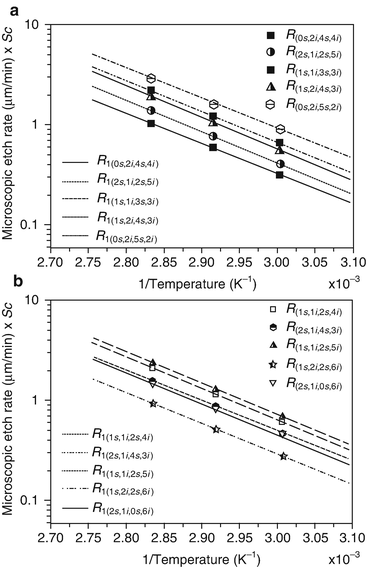Sensors and Actuators A 45 (1994) 85 89 A PHYSiCAL Simulation of anisotropic chemical etching of crystalline silicon Abstract using a cellular automata model O. B ttgenbach Institut fir Mikroechnil Techni,clw Unive,vii t Braunschweig Langer Kan2p 8, D-38106 Braunschweig Germany Received 28 Februaiy 1994; accepted in revised form 16 June 1994 Anisotropic chemical etching of crystalline. A series of programs have been developed to model anisotropic etching of crystalline substances. The focus of this work was on the computation of the geometric offset surfaces for a given object, when the etching of different faces progresses at different rates depending of face orientation. Programs have been developed to calculate the. 2 SIMULATION METHOD In the anisotropic wet chemical etching process, anisotropic etchants etch attack certain crystal planes much faster in one direction than in another direction. For the case of silicon, and planes etch at much higher rate than planes. This etch rate selectivity is used to create various cavity and groove. Sensors and Actuators A, 31(1992) 267 274 267 Anisotropic crystal etching: a simulation program J. Delapierre LET1/DOPTfSCMM-CEA -CENG 85X, 38041 Grenoble C dex (France) Abstract In the field of micro-devices, tools are actually needed to model the fabrication processes, especially the shapes resulting from chemical etching of a monocrystal. Asaumi K, Iriye Y and Sato K 1997 Anisotropic etching process simulation system MICROCAD analyzing complete 3D etching profiles of single crystal silicon Proc. On Micro Electro Mechanical Systems (Nagoya) pp 412–7.
1. IntroductionAnisotropic crystal etching is the common technique used in Micro Electromechanical systems (MEMS) manufacturing. It uses the property of some single crystal materials, like silicon, of having different etching rates in different crystal directions when the material is etched in special chemicals, such as potassium hydroxide (KOH). Predicting the resulting shape of the structure under such conditions requires full three-dimensional simulation of the evolution of the etched surface.Silvaco’s 3D process simulator VICTORY Process is perfectly suitable for such task. The numerical engine of VICTORY Process is able to accurately model physical etching with complicated distributions of etch rates over the surface even for initial structures with complex three-dimensional topographies.Anisotropic Crystalline Etch Simulation Model
PDF: 6 pages Proc. SPIE 6723, 3rd International Symposium on Advanced Optical Manufacturing and Testing Technologies: Optical Test and Measurement Technology and Equipment, 672364 (6 December 2007);
Proc. SPIE 6723, 3rd International Symposium on Advanced Optical Manufacturing and Testing Technologies: Optical Test and Measurement Technology and Equipment, 672364 (6 December 2007);
Show Author Affiliations
Dong Weon Lee, Chonnam National Univ. (South Korea)
Published in SPIE Proceedings Vol. 6723:
3rd International Symposium on Advanced Optical Manufacturing and Testing Technologies: Optical Test and Measurement Technology and Equipment